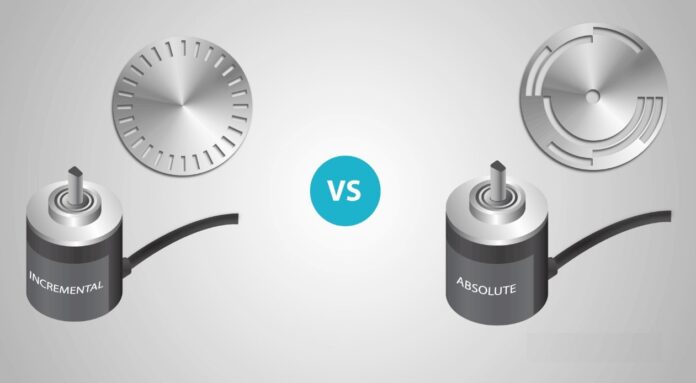What precisely distinguishes incremental from absolute encoders? You may determine the exact location of the shaft in rotation at any time using an absolute encoder. In contrast, an incremental encoder can report only a location change.
You may see many resemblances but if the system loses power, it’s like night and day.
An absolute encoder can report an accurate position without moving after the power is restored. Before it can tell you its position, an incremental encoder must locate an index or home position. If it lacks an index, it will be unable to do so.
HOW INCREMENTAL ENCODERS WORK
We use our incremental optical encoders, an LED, a photodetector chip, and a patterned disc to report shaft position.
Our incremental encoders have a photodetector chip on one side of a clear disc and an LED on the other. The disc is covered in many lines and windows. The windows allow light to travel from the LED to the chip. Not the lines. The encoder feeds location data to the mechanical system as an alternating light pattern.
The lines and windows all have the same appearance. Incremental encoders may calculate the relative shaft position based on the number of windows and pipes that passes in front of the detector chip. That close location is lost if power is interrupted and then restored.
This might be acceptable in some situations, such as using an encoder to estimate movement speed, distance, or direction.
In other applications, an exact position is must.
After a power cycle, an incremental encoder can only output its precise location by rotating the shaft until it hits Index.
An absolute encoder should be considered if you’re creating a system where it’s essential to know the precise shaft position, especially after power to the encoder has been cycled.
HOW ABSOLUTE ENCODERS WORK
Like incremental optical encoders, absolute optical encoders use an LED array, an optical disc, and photo sensors; however, the patterns of the discs are slightly different.
Absolute optical encoders can produce a binary pattern that indicates a particular position by combining several lines, windows, and bands.
Some patterns combine several bands to provide a distinctive pattern at every location on the disc. For instance, based on whether the photo sensors detect light from the LEDs, you can assume that each position can either have a 1 or a 0, depending on the situation. There is no other location in the shaft rotation where the disc would be at its current position, which is 1001.
Other technologies, like our present optical absolute encoders, produce absolute position by using a unique pattern of line spacing and thickness in a single band. There is no longer a requirement to rotate the disc after a power cycle to locate an index location because each point on the disc still has a distinctive pattern that only appears in the rotation.
There are numerous cases where utilizing an absolute encoder instead of an incremental one is not advantageous. An absolute encoder is the best tool for the task, but if you’re working on a system where rotating to find a home position after a power cycle isn’t optimal or practical.
For instance, adopting an absolute encoder would ensure that you always knew the precise location if you were developing a robotic arm or another automation project where rotation to locate an index could be harmful to the machinery or people around it.


